 |
| Category:1st AIF |

|
|
|
|
|
|
Mena Camp Egypt. An AIF
Training Base before Gallipoli Landings |
|
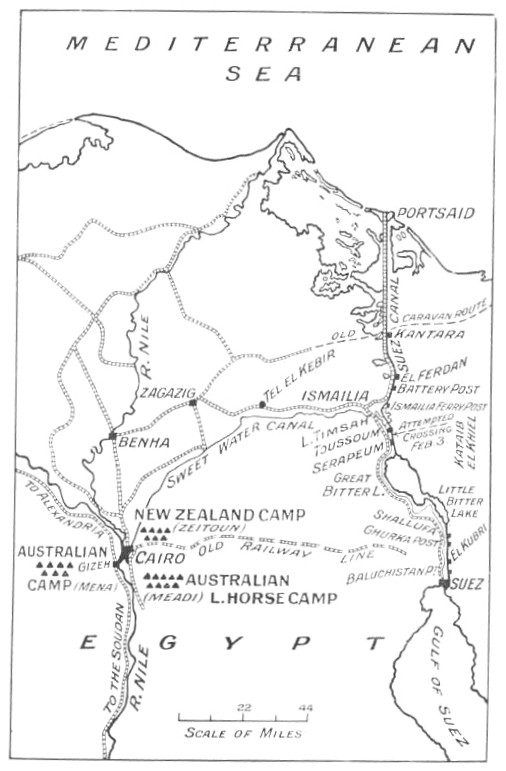
|
| Egypt
and the Suez Canal: This map shows
how the troops defending the Suez Canal could have been quickly
reinforced from the training camps near Cairo. |
| Part of Mena Camp, ten
miles from Cairo, seen from the road running up the centre of the camp,
known as Artillery Road.
At the far end of the road can be seen
one of the reservoirs built at the camp; in this one the water burst
through the walls.
On the left are the lines of the 1st
Australian Divisional Artillery, and on the right the lines of the 3rd
Infantry Brigade (in the |
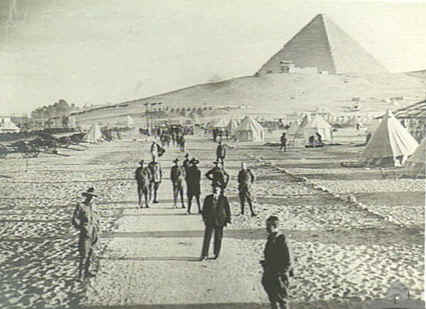 |
| foreground),
and the Divisional Engineers (in the background). On the horizon is one
of the pyramids at neaby Gizeh. |
|
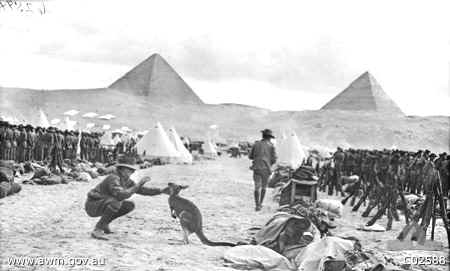
|
Lines of the 9th and 10th
Battalions AIF at Mena Camp, looking towards the Pyramids.
The soldier in the foreground is
playing with a kangaroo, the regimental mascot.
Many Australian units brought
kangaroos and other Australian animals with them to Egypt. Some were |
| given
to the Cairo Zoological Gardens when the units went to Gallipoli. |
| Mena Camp, Egypt,
1914-10-06. This photo represents about 1 fifth of the whole encampment.
The 7th Battalion and 3rd Brigade Australian
Field Artillery are way over in the corner marked with an X. (Top of
image to right of centre) |
 |
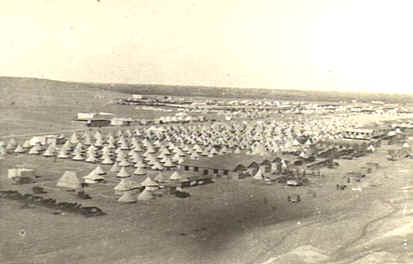 |
The
Infantry Lines at Mena Camp, with the Light Horse & Artillery Lines
in the background. (Donor Mr. H.J. Attwell) |
| Portrait
of 63 Private Albert Henry Wicks, Batman to General Bridges, of
Duntroon, Federal Capital Territory, standing outside General Bridges'
tent at Mena Camp, Egypt. |
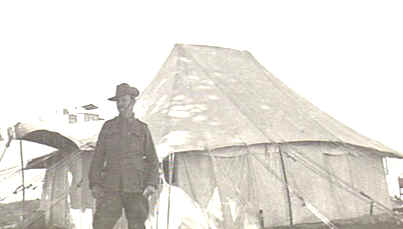 |
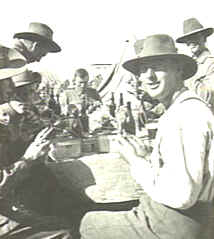 |
Christmas
Dinner (1914) of the 7th Infantry Battalion at Mena Camp.
The two figures in the foreground are
Corporals S Goulding (left), and Driver R A Bunning (right, full face).
Both were afterwards killed in action.
At the head of the table is Lieutenant
Whitelaw of Duntroon Military College. |
| Egypt,
probably Mena Camp, C.1914/15. A group of Army cooks beside an outdoor
kitchen. (Donor: Joan Thomas). |
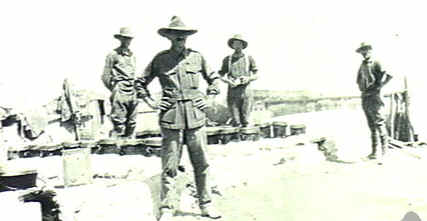 |
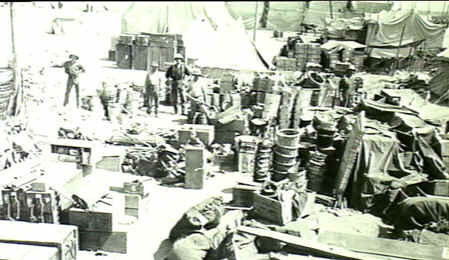 |
Cairo,
Egypt, WWI. Australian Army Ordnance Depot, Mena Camp. |
| Egypt.
1 January 1915. Captain Charles Edwin Woodrow Bean (C. E. W.) standing
on a Pyramid, on New Year's Day. Beneath him is Mena Camp. |
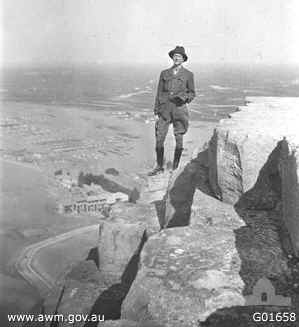 |
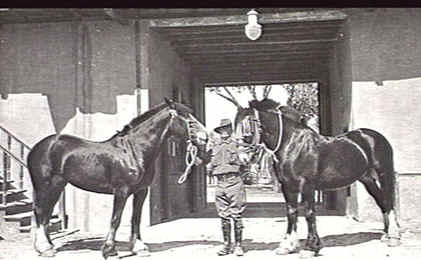 |
An
unidentified soldier holding two of the original 1st Divisional
Headquarters Transport Army Service Corps draught horses, at Mena Camp
in 1915. |
| Mena,
Egypt, C. 1915. Canberra Road, Mena Camp, showing the Army Post Office
on the right. Tthe troops shown comprise one of the daily parties who
visited the Divisional HQ to have their clothes sterilized (to kill
lice). Late 1914 or early 1915. (Donor: A. Bazley). |
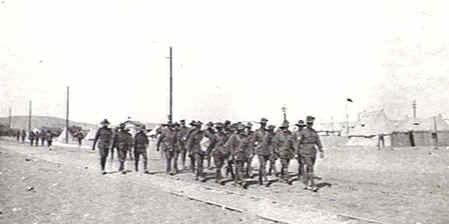 |
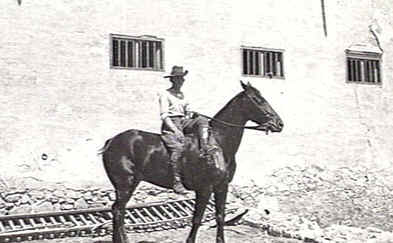 |
68
Private William John Crook, 1st Divisional Australian Army Service
Corps, of Wonthaggi, Vic, mounted on one of General Bridges' horses at
Mena Camp, Egpyt 1914 to 1915. |
| Cairo,
Egypt, 1915-01-09.
Group of members of the 1st Battalion
Band, with their instruments, at Mena Camp, with the Sphinx and a
pyramid in the background.
One member of the band was Frederick
G. Jeffkins.
(Donor E. Aneli) |
 |
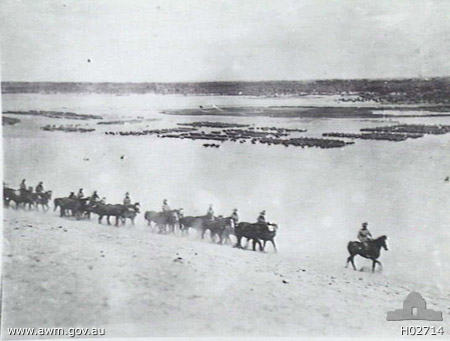 |
Mena
Camp, Egypt. 1915. Inspection and march past of Allied troops before
(British) General Sir Ian Hamilton.
Australian troops included 4th Australian
Light Horse, Australian Artillerey, 1st, 2nd and 3rd Brigades and Ammunition
Column.
(Donor A.P. Balland) |
| Mena
Camp, Egypt. C. 1915. Close up of five horses wearing feed bags.
(Donor A.P. Balland) |
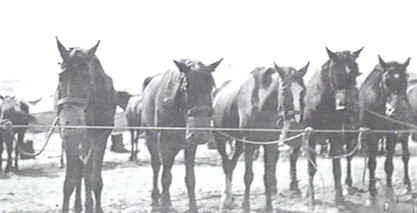 |
 |
Mena,
Egypt. c. 1915. The Mena Hotel which was close to Mena Army Camp and the
Pyramids.
The hotel was converted to house
No 2 Australian Army General Hospital and No 2 Australian Army
Stationary Hospital.
(Donor J. Campbell) |
| Mena
Camp, Egypt. March 1915.
An AIF Regimental Medical Detachment
on parade with a horse drawn cart known as a Maltese Cart.
A part of the markings on the
cart read Aust Inf and below that can be seen 3 Inf Bde. (Donor
Colonel A.G. Butler) |
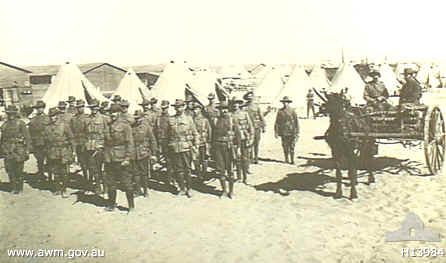 |
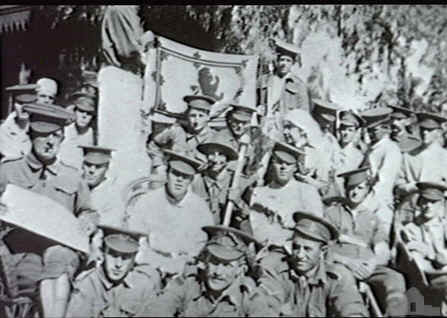 |
Mena
House, Egypt. C. 1915-03. A group of patients with a nursing sister at
the 2nd Australian General Hospital gathered under a banner depicting
the Red Lion of Scotland.
Inscription on the original:
"AIF Scots at Mena". (Donor: R. Poignant) |
| Portrait
of 1st Divisional Headquarters batmen; 32 Private Ernest Henry Rowe, of
Mildura, Vic; 27 Private Christopher Arthur Wren, of Footscray Vic, and
56 Private Wilfrid Davis Stanley of Geelong West, Vic, (obscured) at
Mena Camp, Egypt. |
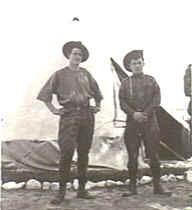 |
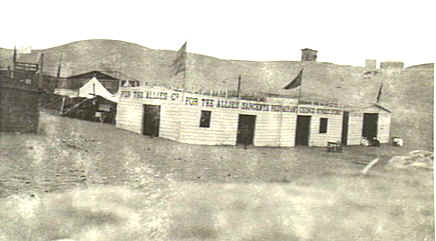 |
A
group of buildings erected near Mena, by Egyptians, to provide
refreshments for AIF soldiers. They display signs such as
"KANGAROO
TEA TENTS REFRESHMENTS" &
"FOR THE
ALLIES CO. SARGENTS (sic) RESTAURANT". |
| Cairo,
Egypt. December 1914. Ablutions area at Mena camp, showing men washing
next to benches with water in buckets. (Donor B. J. & V.
Cardiff) |
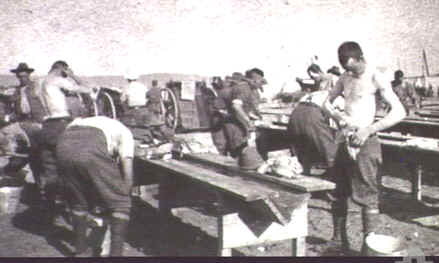 |
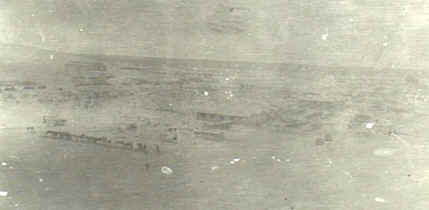 |
Egypt,
North Africa. 5 April 1915. The end of Mena camp. The men of the 1st
Australian Infantry Brigade can be seen striking their tents. Camp is
already almost empty. |
|